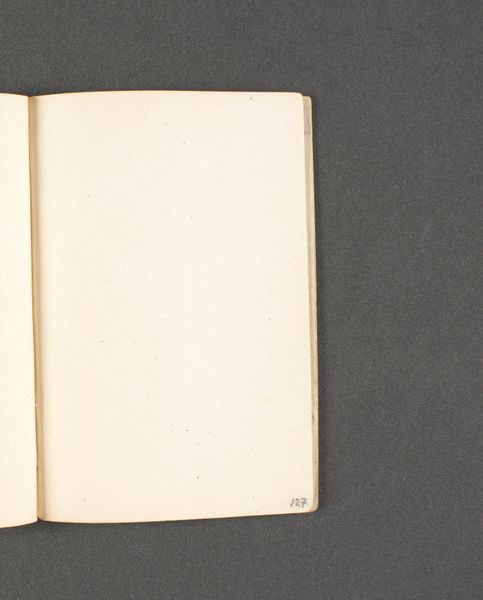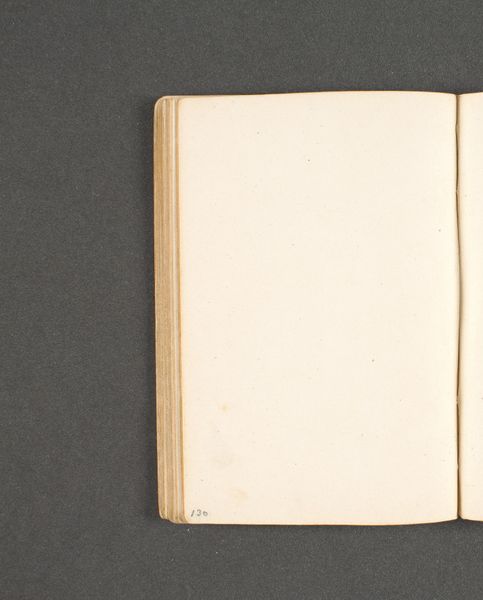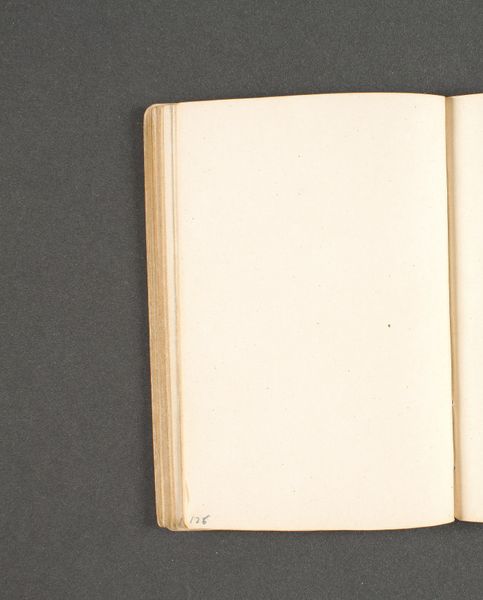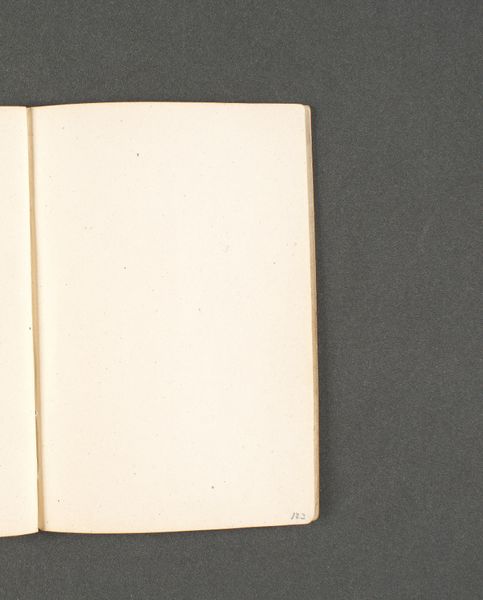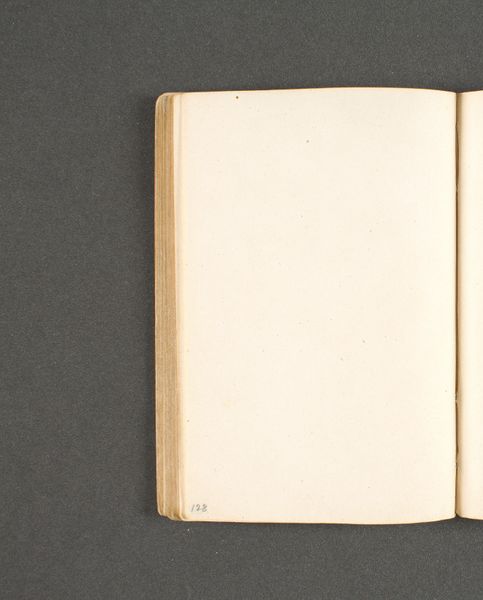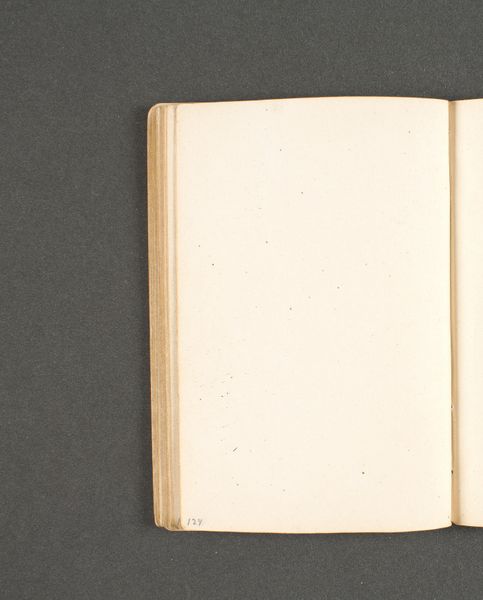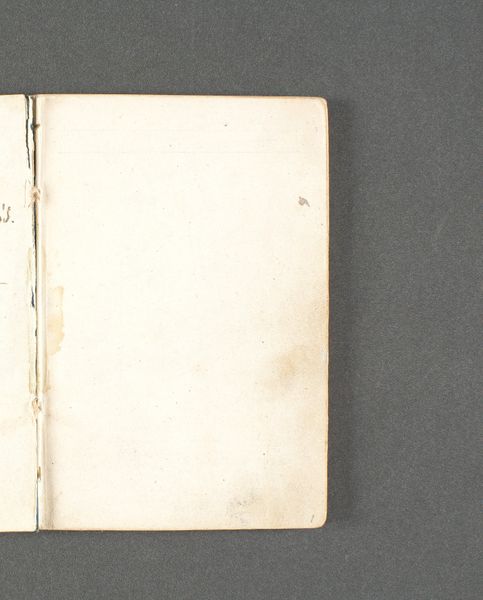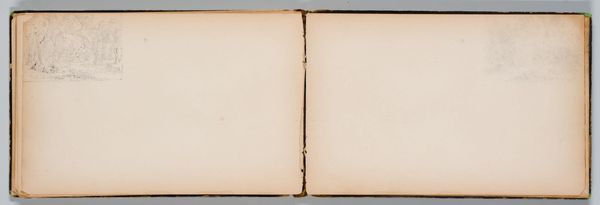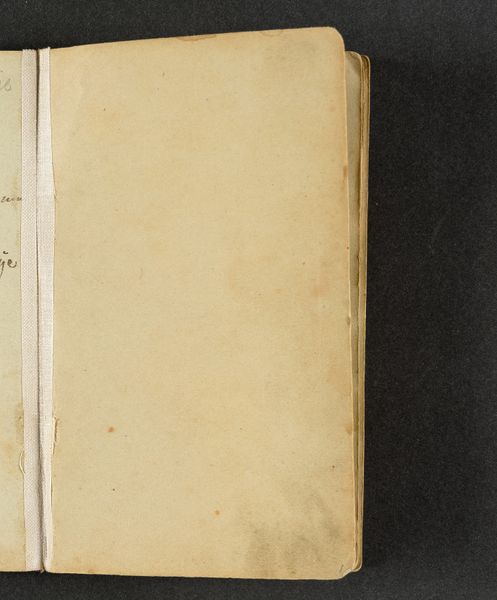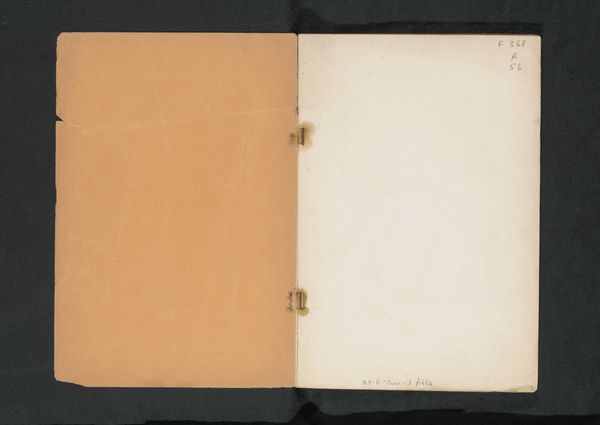
drawing, paper
#
drawing
#
paper
Dimensions: 131 mm (height) x 89 mm (width) (bladmaal)
Curator: Welcome. Today, we are looking at "Blank," an 1846 drawing on paper by Johan Thomas Lundbye, housed here at the SMK, the National Gallery of Denmark. It depicts an open notebook, pages pristine and untouched. Editor: It strikes me as almost unnervingly blank. The creamy hue of the paper suggests age, but it’s so stark—almost confrontational in its emptiness. A waiting canvas daring you to do something, or maybe a mirror. Curator: Absolutely. Considering Lundbye's known penchant for landscape studies and his deep engagement with Danish national identity, this seemingly simple drawing invites examination of artistic production itself. What conditions made that blankness possible? The paper itself was industrially produced by the mid-19th century, marking a new stage of commodification for artistic materials, allowing artists wider accessibility to materials that historically had to be hand prepared in the studio. Editor: I'm thinking about how the artist relates to the page. This era, 1846—the anxieties of the bourgeois rise are palpable, a pre-revolutionary tension humming just under the surface of artistic endeavor. I imagine the choice not to fill the pages is both radical and fraught, raising questions about the function and expectations that society imposes. And more broadly, it is important to recognize the paper as more than a ground for representation; its existence echoes global structures of access, equity, and colonialism that shape how all things get done in this era. Curator: Indeed. Furthermore, we need to consider labor. Even blank pages are manufactured, bound. To look at this drawing solely as a study in potential—as purely artistic, detached from the means of production—would, in my view, be an incomplete understanding. The emptiness emphasizes how easily raw materials are overlooked in evaluating works like Lundbye’s other landscape studies. Editor: So, are we invited to challenge a cult of productivity? Given art history's preoccupation with completed work, the unfinished, the fragmentary, speaks powerfully to possibilities beyond mastery, or even representation itself. It reframes our view to see art as a place where the structures upholding a specific worldview might be dismantled, however gradually. Curator: I appreciate how that speaks to the tensions embodied here. This may be seen as a point of rest; or an invocation of possibilities. It encourages viewers to contemplate their own role in ascribing meaning and assigning value, and their access to means to create, produce and even imagine. Editor: Well said. The piece is less a depiction of an object, and more an evocation of self-reflection on society itself.
Comments
No comments
Be the first to comment and join the conversation on the ultimate creative platform.
